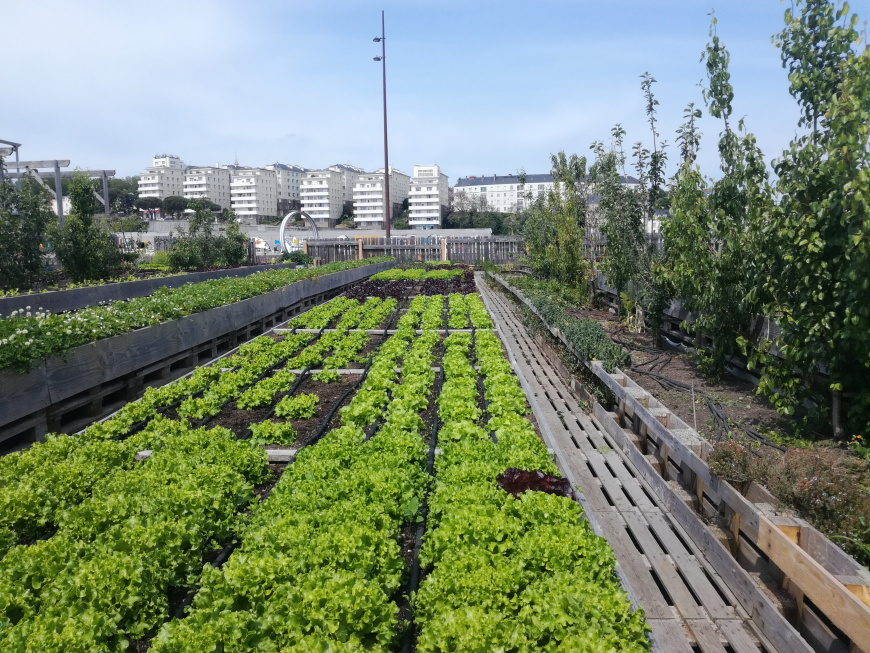3 Easy Facts About City Blooming Explained
3 Easy Facts About City Blooming Explained
Blog Article
Unknown Facts About City Blooming
Table of ContentsTop Guidelines Of City BloomingNot known Facts About City BloomingCity Blooming Fundamentals ExplainedA Biased View of City BloomingThe smart Trick of City Blooming That Nobody is Discussing
Intrigued in expanding food for sale in the City of Chicago? Below is a checklist of frequently asked concerns concerning the rules and regulations that farmers need to take into consideration when planning a metropolitan agriculture task.
The zoning amendment does not change any type of other codes taking care of composting, structure licenses, buying or renting City had home, company licenses or ecological contamination. There are existing codes that manage these issues and they remain completely effect and might apply to your task. Area yards are normally possessed or managed by public entities, civic organizations or community-based companies and maintained by volunteers.
Urban ranches expand food that is intended to be offered, either on a not-for-profit or for-profit basis. Due to their business objective, metropolitan ranches call for an organization certificate. Yes. A community yard is allowed to sell excess produce that was grown on website if the sales are accessory or subordinate to the yard's main objective explained above.
The Basic Principles Of City Blooming
Composting is allowed but just for plant material that is generated and utilized on website. The quantity of garden compost product can not surpass 25 cubic backyards at any type of given time according to the requirements in 7-28-715 of the City's Municipal Code. Yes. Because the soil at the majority of brand-new garden sites needs changing, compost, dirt, timber chips, or various other products can be acquired to create or boost the growing room - container and raised bed gardening etc..

If a building authorization is needed then the hoophouse will be considered an accessory structure. You can figure out more regarding the building authorization needs by speaking to the Division of Buildings. The 25,000-square-foot size restriction is intended to avoid a solitary neighborhood yard from controling a provided block or interfering with the block's existing domestic or industrial personality.
The restriction does not relate to yards found in Public Open Room (POS) areas. Can there be even more than one neighborhood yard that is 25,000 square feet on a single block? Yes. The dimension limit uses to private gardens, not to specific blocks. No. Secure fencing is not required, however, yards that have huge parking lot may be needed to set up secure fencing or various other landscaping attributes.
An Unbiased View of City Blooming
B1 & B2 districts require that all commercial use tasks be carried out inside. R districts restrict industrial task. The guidelines mirror the purpose and intent of the Zoning Code. Is fencing required for city farms? Yes. Fences may be required, in addition to landscape design and screening, for certain parking lot and outside work or storage locations depending on location and the certain task occurring.
Urban farms need structure authorizations and zoning approvals prior to building (City gardening). Various other types of city review may be required depending on specific structures, tasks, dimension, landscape design, licensing, public health and stormwater management issues.
The Division of Organization Matters and Customer Protection can help determine the details type of organization certificate that's needed. Off street car park is required for most business jobs in Chicago. The called for number of parking spaces is based on the number of staff members working on website and not the square footage of the growing space.
The Best Strategy To Use For City Blooming

An urban farm can sell compost product produced on website, nonetheless, the operation needs to comply with the laws in 7-28-715 of the Chicago Municipal Code. Aquaponic systems are permitted inside your home on metropolitan ranches in several zoning districts.
Up to 5 hives or colonies of honey bees might be kept as an accessory use. Nonetheless, beekeepers must register with the Illinois Department of Farming. For additional information concerning the suggested zoning amendment you may speak to the Division of Housing and Economic Development, Bureau of Planning and Zoning at 312.744.8563.
Farming in cities More hints and metropolitan areas An urban farm in Chicago. Urban farming refers to various techniques of growing. https://www.find-us-here.com/businesses/City-Blooming-San-Francisco-California-USA/34090046/, processing, and dispersing food in metropolitan areas. The term likewise puts on the area tasks of animal husbandry, tank farming, beekeeping, and cultivation in an urban context. Urban agriculture is differentiated from peri-urban agriculture, which takes place in backwoods beside suburbs.
The City Blooming Diaries
It can entail a movement of organic farmers, "foodies" and "locavores", that look for to form social networks founded on a common ethos of nature and area holism. These networks can establish by method of official institutional support, ending up being incorporated into local town as a "transition town" activity for lasting urban advancement.
The much more straight accessibility to fresh veggie, fruit, and meat items that may be become aware with city farming can boost food protection and food safety and security while lowering food miles, bring about lower greenhouse gas discharges, consequently adding to climate modification reduction. A few of the first evidence of city agriculture originates from Mesopotamia.
Report this page